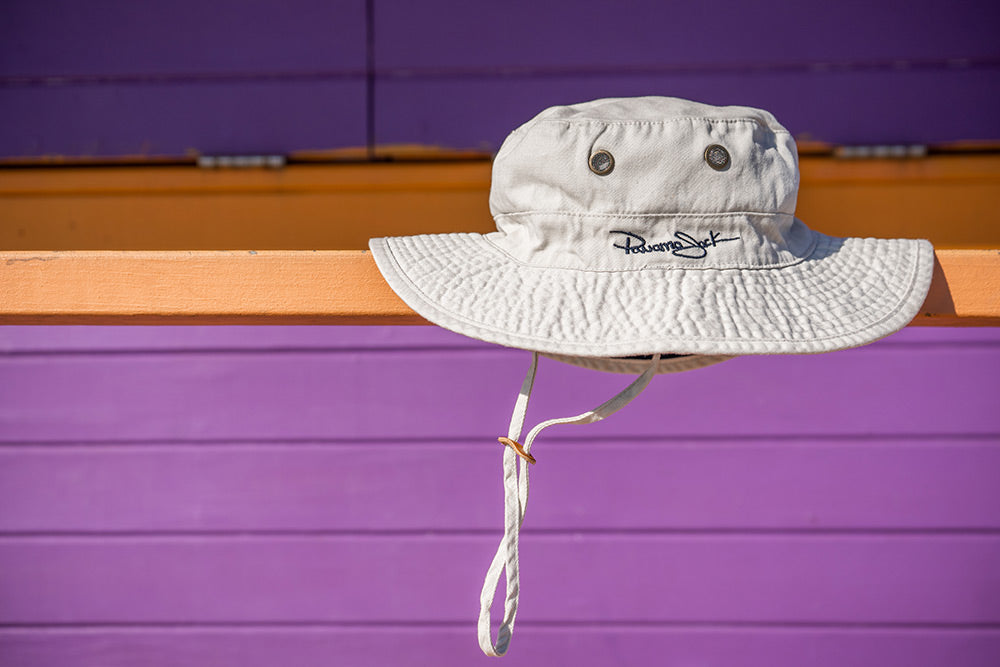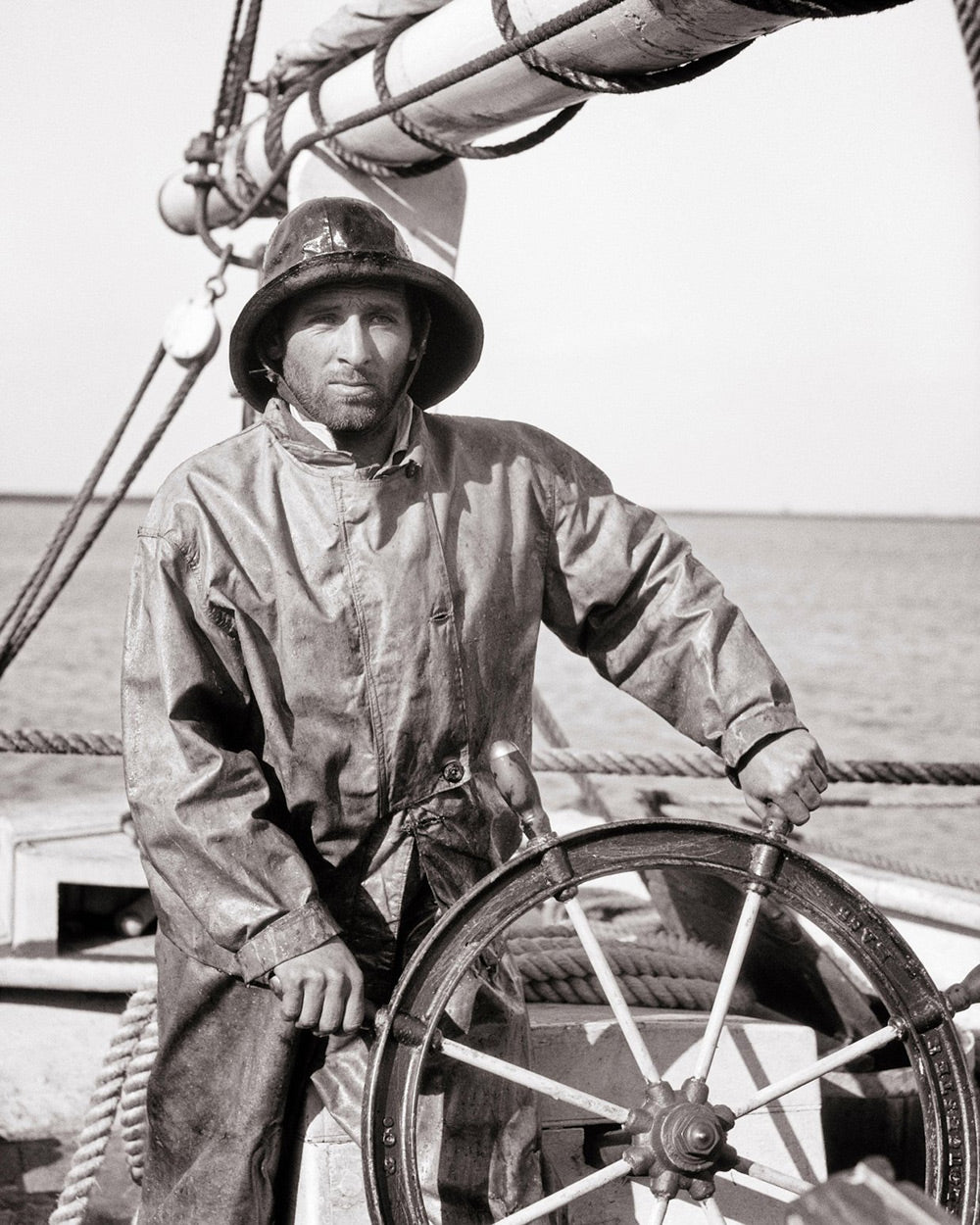
From functional Irish headwear to fashionable island resort wear, the bucket hat has seen a peculiar evolution since it burst onto the scene in the early 1900s. Over the course of nearly a century, what was once a practical piece of rain gear became, by the 1990s, an emphatic fashion statement. Today, its purpose falls somewhere in between, providing protection from the rain, sun and other elements while also putting the perfect “cap” on both rainy-day and warm-weather outfits in numerous cultures around the world.
Here, we take a look at the history of the bucket hat, exploring its humble beginnings and tracing its rise to pop cultural prominence. We also give a special tip of the hat to this multipurpose head piece, outlining a few of the many reasons we believe the bucket hat is a must-have part of any outdoor lover’s wardrobe today.
What is a bucket hat?
First thing’s first—what are the defining features of a bucket hat (also known as a fishing hat or a session hat)? While the earliest designs featured raw wool or tweed cloth, today, the cap comes in a variety of fabrics and finishes. Regardless of the specific materials, at its core, it is essentially a soft cloth hat that has a narrow and down-sloping brim all the way around.
What is the origin of the bucket hat?

Most historians credit Ireland with creating and propagating the first bucket hats. In the very early 1900s, many Irishmen who worked outdoors—particularly fishermen and farmers—began wearing these hats as a means of holding the rain at bay. Made of natural fibers like wool felt, the original bucket hats were created simply for their natural weather resistance. They were modest in design, and with very little adornment.
How did the bucket hat spread beyond Ireland?
From the very start, these high-performing hats were an unofficial symbol of the working class. So it was ironic that the British upper classes soon began to adopt them for more aristocratic pursuits: hunting, sport fishing, and even simply for long walks through the damp and drizzly English countryside.
By WWII, a version of the bucket hat (known as the boonie hat, featuring a comparatively stiffer brim) had found an international audience, and its popularity only continued to soar from there. Troops from many nations, including the United States armed forces, began to wear them for a multitude of purposes—from shielding their eyes from the rain and sun, to helping to keep their heads cool from the midday heat. Ultimately by the end of the war, the bucket hat had found devoted fans around the world.
It wasn’t until the 1960s, though, that the bucket hat truly went mainstream, thanks to a series of pop culture inclusions that put it on the map as a style choice, above and beyond its form and function. Renowned American gonzo journalist, Hunter S. Thompson, was known to wear a crisp, white cotton bucket hat for many years (even Johnny Depp sported one when portraying Thompson in the 1998 film, “Fear and Loathing in Las Vegas”). Meanwhile, in TV land, the eponymous character, Gilligan, of “Gilligan’s Island,” wore a light khaki model for the three-season run of the hit series.
By the 1980s, the bucket hat was appearing in everything from blockbuster movies to pop and rap music videos, while a number of athletic wear brands began releasing their own “sporty” versions of the trend. And if the 80s are when bucket hats first permeated celebrity culture, the 90s are when they went fully household in nature, capping the heads of dads to teens and everyone in between. Even couture brands have gotten in on the craze over the years, with dozens of designer bucket hats, both vintage and new, lining store shelves around the world even today.
Why are bucket hats so great?
Let us count the ways!
- Comfort: Whether wool or tweed, cotton or canvas, bucket hats are known for their extreme comfort in multiple conditions, from pouring rain to beating sun. They easily conform to the shape of your head, and can keep you cool and dry even as the weather may shift around you.
- Protection: Whether your particular bucket hat has a wide or narrow brim, the core design of the hat often allows it to shield your eyes, face and even your neck from the rain as well as the sun’s harmful UV rays. No more back-of-the-neck burns when you’re sporting one of these.
- Convenience: Another benefit of the hat’s soft construction is that it’s highly packable, making it a no-brainer to throw into any beach bag or carry-on. It packs light and won’t lose its shape, so you can have stylish sun protection any time, anywhere.
- Care: The hats are designed to be worn outdoors, and as such, they’re typically easy to clean and care for.
- Style: With a variety of materials, brim styles, features and embellishments available today, there’s a bucket hat that’s right for every head, no matter your personal style.